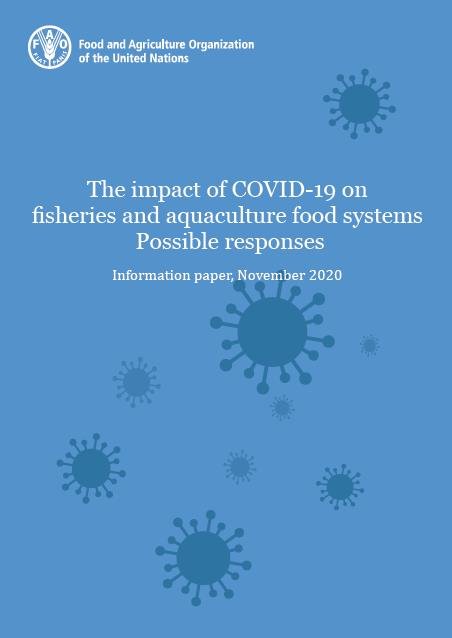- Share this article
- Subscribe to our newsletter
The impact of COVID-19 on fisheries and aquaculture food systems
Global fisheries and aquaculture have been hard hit by the COVID-19 pandemic, informs the report The impact of COVID-19 on fisheries and aquaculture food systems, published by the Food and Agriculture Organization of the United Nations (FAO) in February 2021. The sector could face further disruption in 2021 as lockdowns affect supply and demand, the authors warn.
Fish supply, consumption and trade revenues for 2020 are all expected to have declined due to containment restrictions, the report noted, while global aquaculture production is expected to fall by some 1.3 per cent, the first drop recorded by the sector in several years.
Falling demand for fresh fish products
Aggregate prices for 2020, as measured by the Fish Price Index, are down year-on-year for most traded species. Restaurant and hotel closures in many countries have also led to a lower demand for fresh fish products.
The FAO report indicated that for aquaculture, there is growing evidence that unsold production will result in increasing levels of live fish stocks, creating higher costs for feeding as well as a greater number of fish mortalities. Sectors with longer production cycles, such as salmon, cannot adjust rapidly to the demand shifts.
Global catches from wild fisheries are also expected to have declined slightly in 2020, because of the overall reduced fishing effort due to COVID 19-related restrictions on fishing-vessel crews, and poor market conditions.
Consumer preferences have shifted
As a result of Covid-19, consumer preferences have shifted. While demand for fresh fish has waned, consumer demand for packaged and frozen products has grown as households look to stock up on non-perishable food.
Before the pandemic, the sector was on a general upwards trend. In 2018, global fisheries and aquaculture production (excluding aquatic plants) reached an all time record of nearly 179 million tonnes. Overall, capture fisheries, with 96.4 million tonnes, represented 54 percent of the total, while aquaculture, with 82.1 million tonnes, accounted for 46 percent. And over the last decades, fish consumption has grown significantly to an average of over 20 kilos per person.
(FAO/ile)
Read more and download the report The impact of COVID-19 on fisheries and aquaculture food systems at FAO website





Add a comment
Be the First to Comment